This is Uganda, the Pearl of Africa Part 4, Mbarara. Here, we get into the meat of our trip and the reason we visited Uganda in the first place. Read about the first three parts of our trip: Part 1-Entebbe, Part 2-Lake Bunyonyi, and Part 3-Gorilla Trekking in Bwindi Impenetrable National Park. Check out photos from our trip here. You can find the books I used to prepare for the trip here. If you need help planning tours, check out Moses Tours. I highly recommend them!
Off to Mbarara, Uganda
The hotel where we had stayed while visiting Bwindi Impenetrable National Park, Mahogany Springs, had packed boxed lunches for us, which we enjoyed on the 5-hour drive to Mbarara, Uganda. Hotels in Africa will often do this for you. These lunch boxes contained 3 beef samosas, A PBJ sandwich, a banana (of course), a huge chunk of pound cake, and a juice box. More than enough food!
I have to say I enjoyed the drives. The contrast of the dry, red clay roads with the lush green forest was visually pleasing. I loved seeing the villages and getting a peek into the every day life of the locals. Not to mention the African massages! The bumpiness of the roads did, however, get old after a while.
We saw several Chinese companies and businesses throughout the country. China and Uganda have had relations since Uganda gained their independence from Britain in 1962. Since then, China has invested heavily in the infrastructure of Uganda and it currently holds a large portion of the country’s debt. Some Ugandans are wary of their attention and question their motives, not to mention the availability of cheap Chinese goods makes things more difficult for local shop owners. Sound familiar?
MGH Guest House, Mbarara, Uganda
We settled into our accommodations, then set off to explore Mbarara. We were volunteering for the Global Health Collaborative (GHC), a partnership between Massachusetts General Hospital in Boston and the Mbarara University of Science and Technology in Mbarara, Uganda, along with a few other institutions. I know they are always looking for pathologists to go! If you are a pathologist interested in experiencing this, PLEASE contact me and I will hook you up! They may need other docs as well, so if you are in another specialty and are interested, hit me up! My husband ended up making significant contributions as well, helping the pathology department set up a computer database.
The Guest House
The MGH Guest House was like a fortress in the town of Mbarara, Uganda. A brick wall topped with broken glass to keep out would-be intruders surrounded the grounds. There was a massive, locked, weighted iron gate with a guard house and tight security. While we never felt unsafe in Mbarara, most houses had this type of perimeter and we were instructed not to go out walking alone after dark. We could arrange for a driver if needed.
The house was large, comprised of two stories and several bedrooms, three common seating areas, a dining room, and a shared kitchen. Pauline, the caretaker, greeted us warmly and showed us to our room. Our bedroom was huge and contained a queen-sized bed with mosquito netting, a desk, shelves, and two closets. We had our own bathroom. There were a few quirky things about the room. If you wanted a warm shower, you had to go down the hall about a half hour ahead of time and turn on the hot water heater. You had to flip a switch to turn on the electric outlets, and turn them off whenever you left or were not using them. The bed was very firm.
Pauline made us breakfast every day, which often consisted of omelettes, toast, fruit, and Nutella. The avocados were massive, creamy, and flavorful!
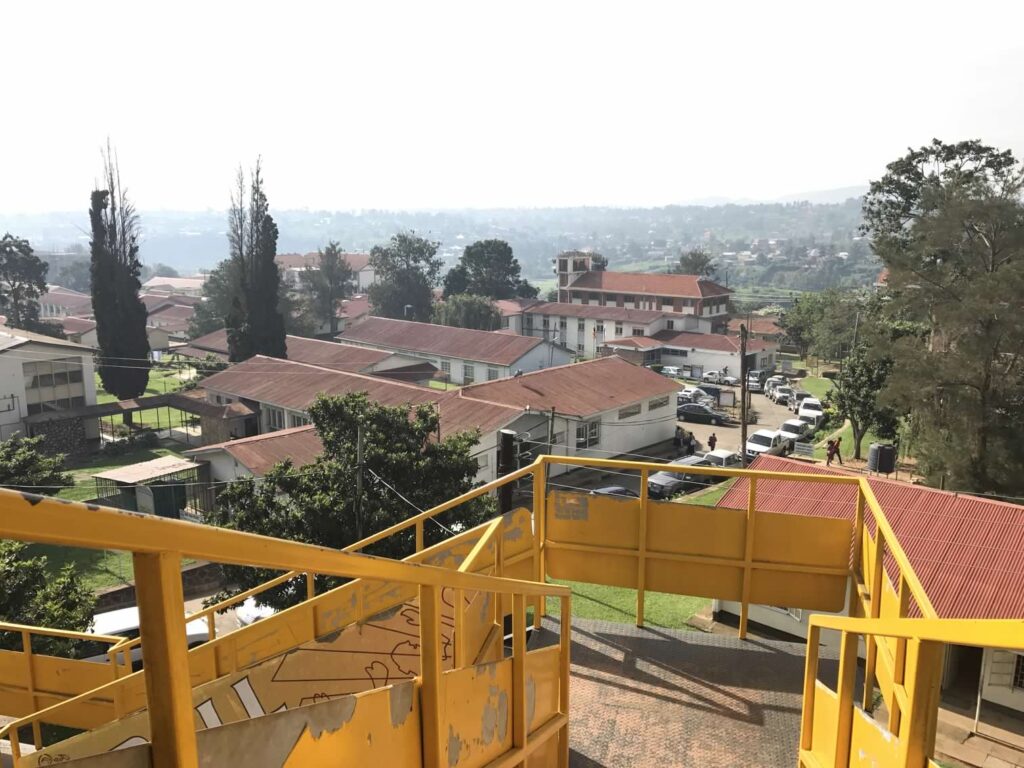


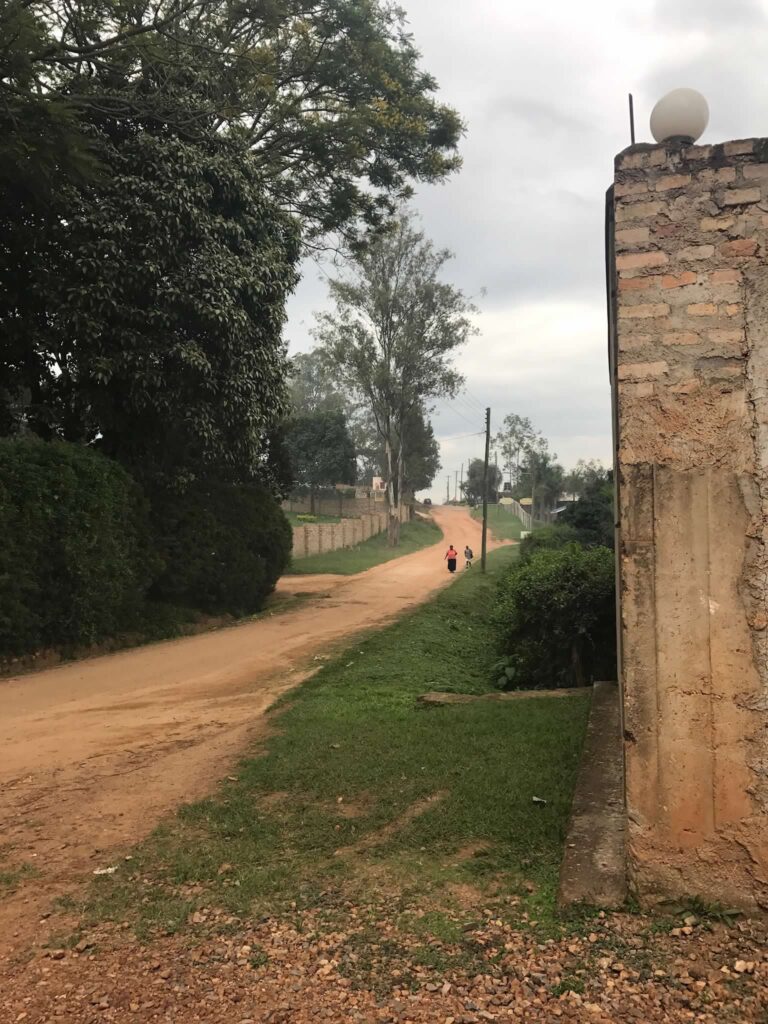

Preparing for our Work
Uganda is a very conservative country, at least partly due to the influence of Christian missionaries. The volunteer coordinators advised me to wear modest dresses and Vuong to wear button-down shirts and slacks. My uniform consisted of below-the-knee dresses with short sleeves, and sneakers which I would exchange for flats upon arrival at the hospital-not my typical style.
We packed two large suitcases with conservative clothing we had bought at a thrift store, textbooks, and lab materials for donation. We filled our carry-ons with our casual clothing and toiletries for everyday use. At the end of our stay in Mbarara, we donated the clothes, materials, and suitcases, so we were left with only carry-ons for the last leg of our trip and return flights.
Marabou Storks
Each day, we walked for 15-20 minutes through Mbarara, Uganda, from the guest house to the hospital. Our walk took us through a golf course and across a pedestrian walkway, built so walkers did not have to brave the busy road.
We passed a park where numerous Marabou Storks hung out… these creepy, giant birds are also known as “Undertaker Birds” because they look like they are wearing tuxedos and they eat carrion (along with scraps and poo). (No offense to undertakers, I know they don’t actually eat their customers). They stand up to 5 feet tall and have a huge pouch of neck skin, called a “gular sac” that looks like a massive scrotum. Apparently, the lady storks find this very appealing, as it is used in mating rituals and swells and turns pinker during mating season…it is also used in formulating vocalizations. If this is not enough, the storks poop on their own legs to regulate body temperature, giving a white appearance to the legs.
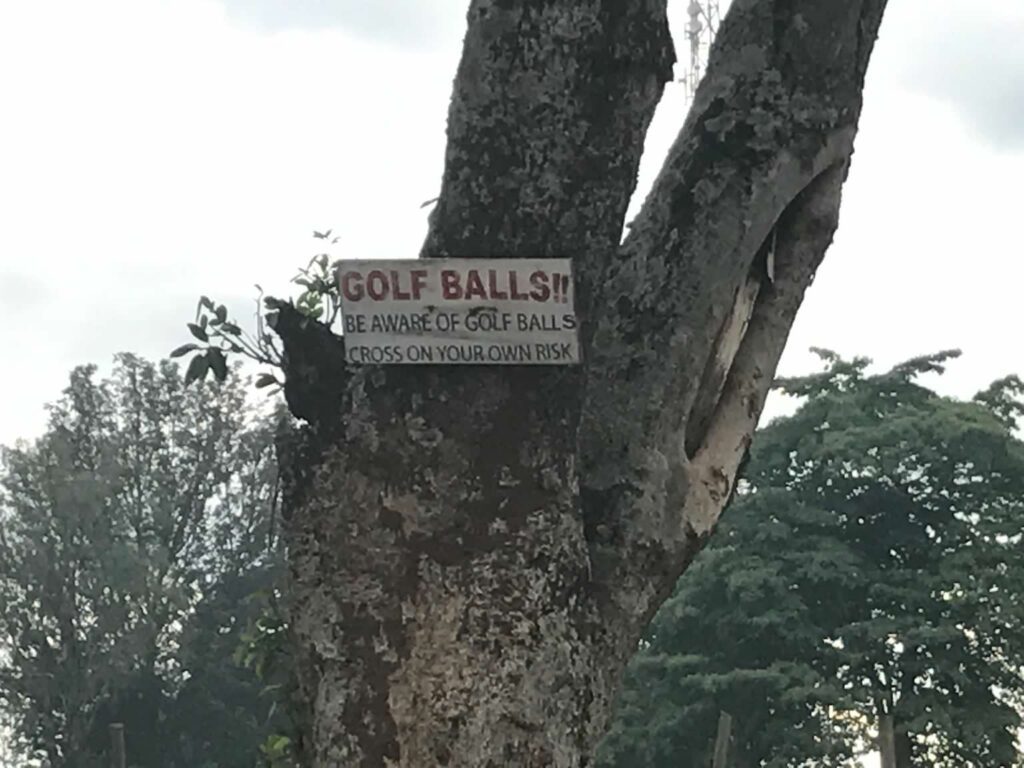

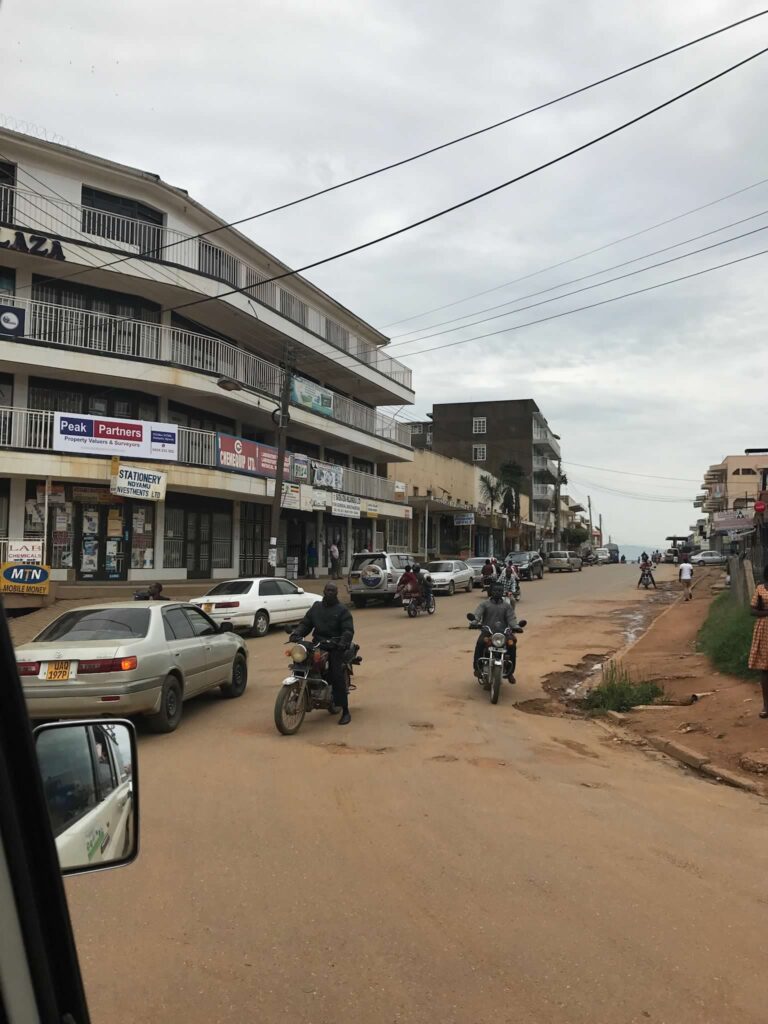

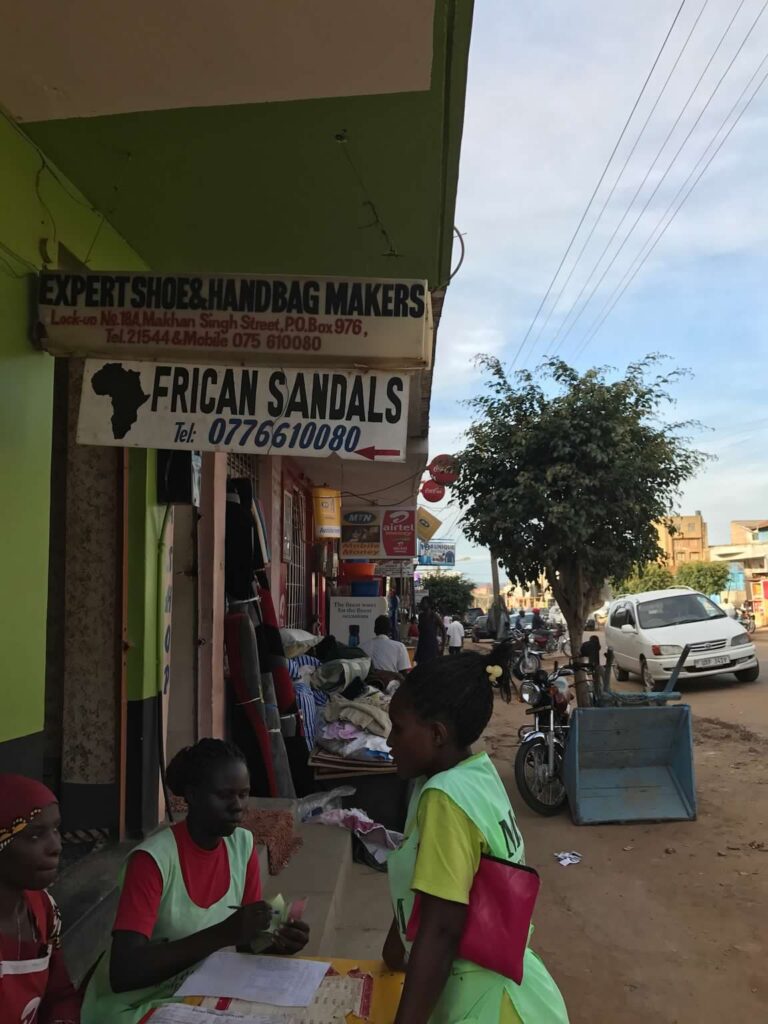



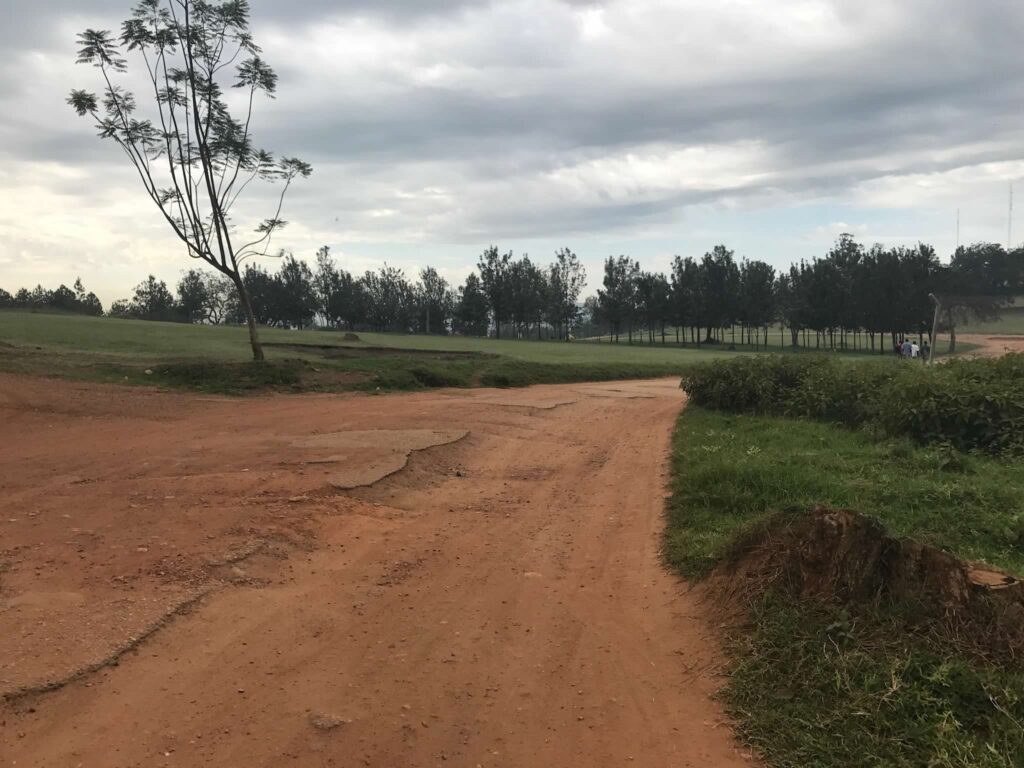

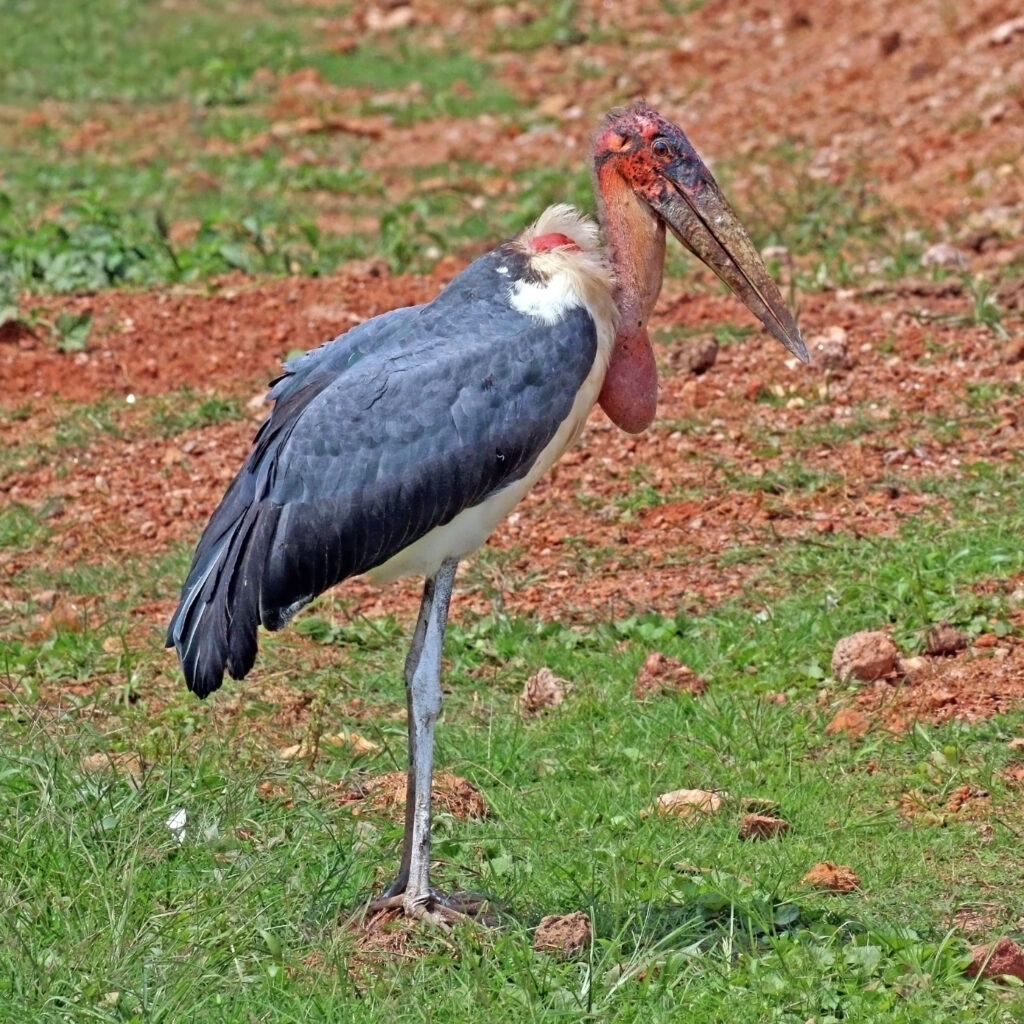

MUST
But I digress… we continued past stork park and crossed over the busy road on a yellow metal pedestrian walkway. We could see the entire layout of Mbarara University of Science and Technology (MUST), which consisted of several amber-roofed buildings. The hospital rooms took up several of them, each having entrances from the outside like a motel. The families often had to come from villages several hours away, and often could not afford to stay in hotels. So, they would set up mattresses outside of the hospital buildings. They had to bring food, linens, and other items for themselves and for the patients. They had to do laundry for themselves and their patients, which they hung to dry all around the campus.
The Faculty of Medicine resided at one end of one of the hospital buildings. We checked in with the very serious, intimidating female Dean who made us all quake in our boots. It was in her office that we first met Dr. Raymond, the Chief Resident. He was a soft-spoken, intelligent man with kind eyes and an easy smile. Dr. Raymond escorted us to the Department of Pathology.
The Pathology Department
The Department of Pathology was like something out of a movie, with its off-white walls, dark wood doors and trim, and gates between sections. It consisted of several offices, a conference room, the histology laboratory, and the gross room which doubled as an FNA clinic. The medical students’ classroom was across the way.
The People
The people make this department what it is, and we met some amazing people! Betty was the gatekeeper and office queen. She was a sweet but no-nonsense grandmotherly type, whose favorite hobby was “digging,” the term she used for gardening. “Chief” was the chief of the laboratory and ran the show on the technical side, and Abraham worked in autopsy.
Dr. Omo was a tiny, beautiful Nigerian woman with an elegant British-ish accent and long braids. She had been visiting from Harvard for several months and was the only Attending Pathologist… and she was leaving!
The Work
This would mean I was the only attending! Luckily, Dr. Raymond was like an attending and had an in-depth knowledge of the workings of the department and an excellent breadth of knowledge in the field. There were 3 residents including him, Mitella, and Sharif. Their resilience, flexibility, and ability to work in such a resource-limited setting humbled me. Random power outages make it challenging to use a microscope, and the lack of immunohistochemical stains can make definitive diagnoses difficult.
Over the course of our visit, I spent many hours at the scope with Raymond and Sharif, and saw a variety of cases not usually in my repertoire- retinoblastomas, neuroblastomas, fungal keratitis, herpes conjunctivitis, and cancers far more advanced than we are accustomed to seeing in the US. Raymond and Sharif each exhibited a broad base of knowledge and a keen eye. In addition, Dr. Omo obviously impressed upon them the importance of communicating with other physicians and playing active roles in patient care, and left a legacy that will live on.
I assisted with surgical pathology and cytopathology case work, taught at the scope, helped out in the gross room, and gave lectures to medical students. I was able to assist the teaching program in other ways as well, including grading papers and writing examination questions for medical students. Vuong probably helped more than I did, spearheading efforts to assemble a database for the department and working closely with GHC staff to get this project close to completion. The laboratory case logs were hand written in massive stacks of logbooks, and he helped set up their computer system.
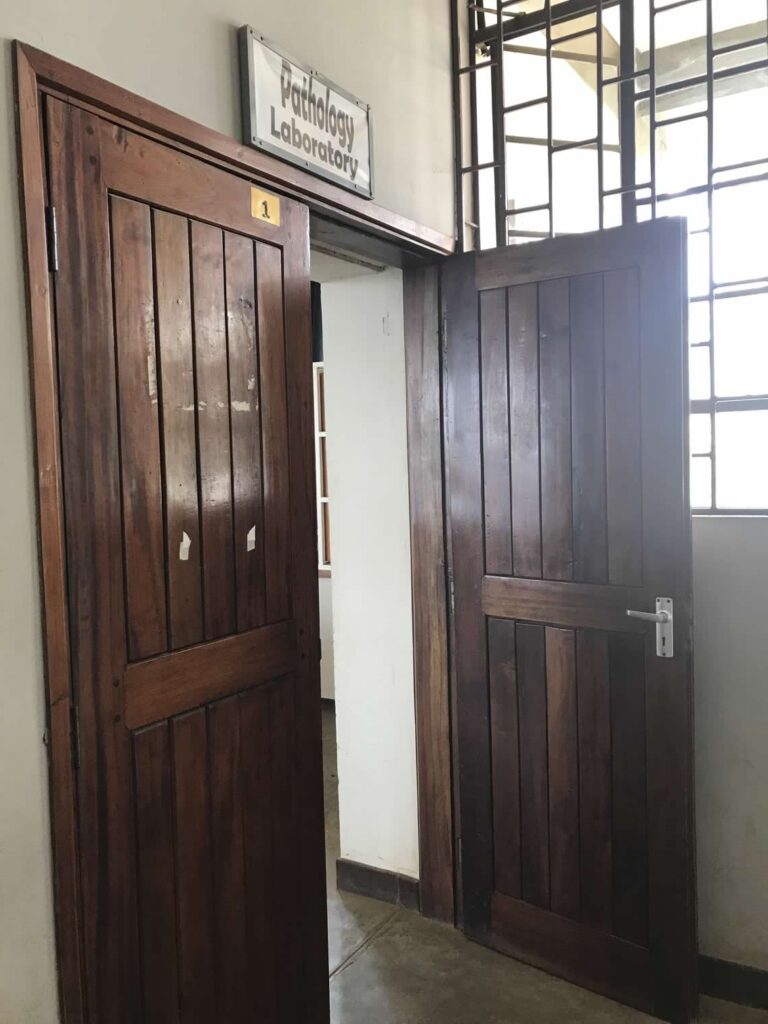

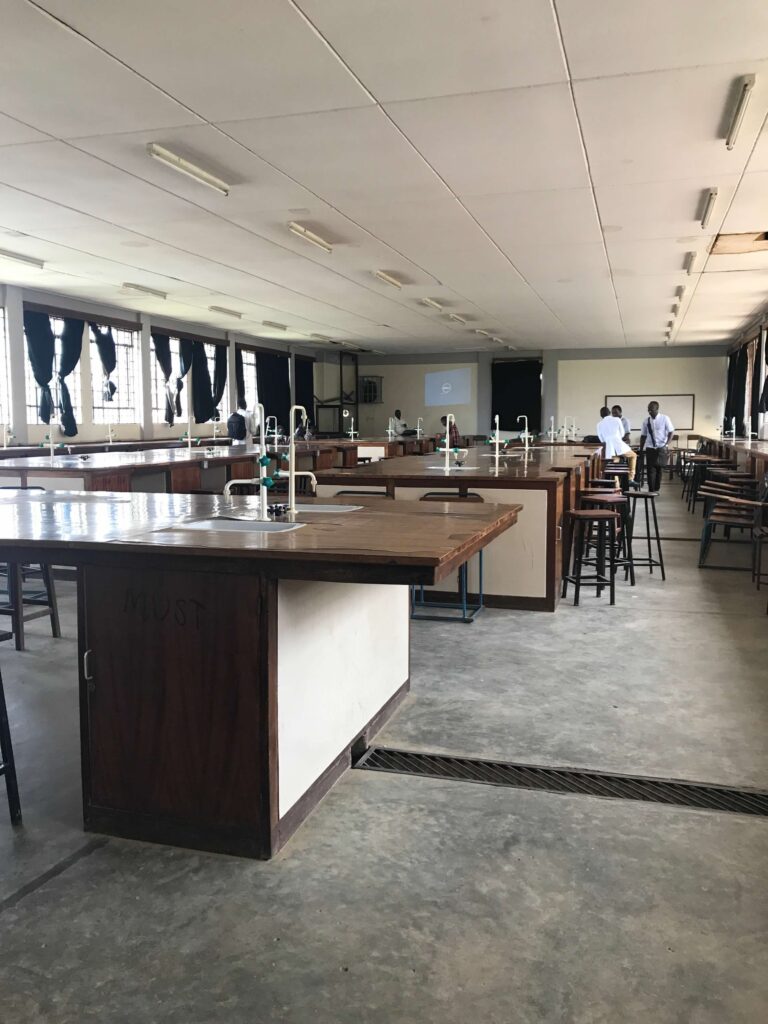

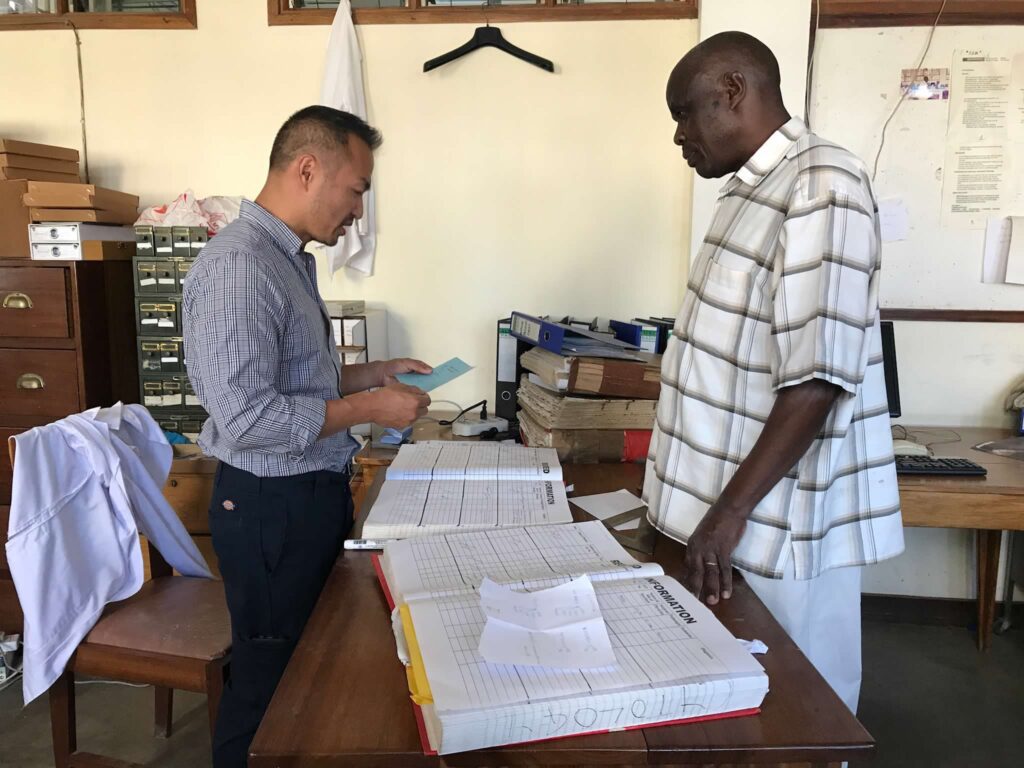

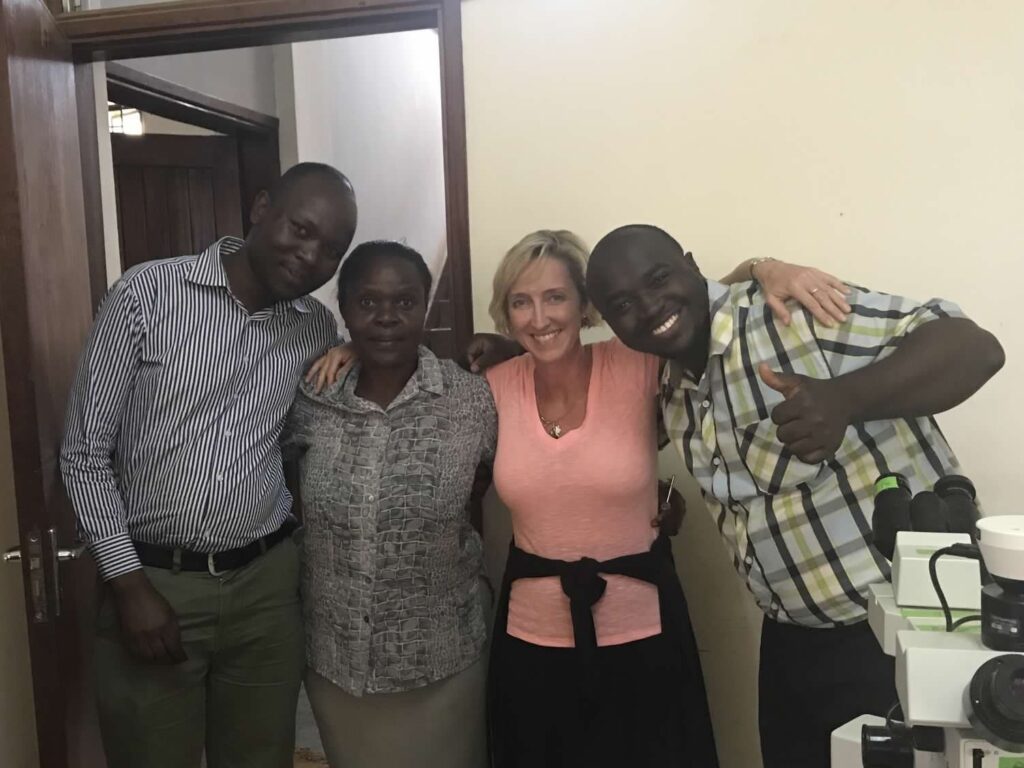



The Town and Life Outside of Work
When we weren’t working, we were exploring the area. Other volunteers and fellows associated with the program showed us around town, recommending a tailor for custom made clothing and restaurants. I had two dresses made of colorful African fabric, and bought a hand-made pair of leather beaded sandals. Everywhere I went, I terrified children and amused locals. “Muzungu” literally means “someone who wanders around.” People use this term in many parts of Africa to describe foreigners. It seems to me like a teasing, playful term of endearment, but it can be used in an insulting way. I heard it many times and never felt insulted by it… I felt more like a minor B-list celebrity and some days, an oddity in a cage!
One day, as we walked home from work, a Landrover screeched to a stop in front of us. A fellow muzungu hopped out and all but hugged me! She was so excited to meet a fellow foreign English-speaker that she had to stop and make friends. Claudia from Germany was in town for an extended period of time to work on water purification, and she was starved for conversation! She invited us over for dinner, and we joined her and her labradoodle named Brandy at her compound for a fun night of food and conversation.
Dining
We had dinner with Claudia a couple of times, and dined with the pathology department for Dr. Omo’s going away party. We visited several restaurants in Mbarara, including Buffalo, Agip, Little Woods Inn, Ark Bar, Cafe Havana, and Lord’s Bar. Cafe Havana had a nice balcony and great service, and Ark Bar had decent Indian food. We had on of our best meals at Little Woods Inn, which was located right across from our guest house. My favorite dining experience, though, was at Lord’s Bar. This was a truly local place and a very authentic experience. Our waiter brought around a bucket for hand washing, then we had a dinner of juicy, flavorful chicken, grilled goat, and french fries with salsa.
To be completely honest, we did not enjoy Ugandan cuisine. The flavors were a bit subtle for our palates, and the meals were very carb-heavy. The chickens and goats tended to be very lean and they had to be thoroughly (over)cooked, resulting in tough, dry meat. The best choices for us tended to be fish and cuisine from other ethnicities.
One major exception was the ROLEX. It’s name came from a play on the words “egg” and “roll,” although it was not at all an egg roll. Instead, it was eggs (with vegetables) rolled in chapati bread. We had this simple snack each day for lunch. Several vendors had set up stalls outside of the hospital. Some sold clothing and shoes, while others sold fruit or other food. Each day, we bought two rolexes each from the same vendor.
My Little Friend
A woman had a blanket spread out in front of the Rolex stand where she sold clothing, and she brought her sweet little 3-4 year old son with her to work each day. Her daily entertainment during our visit was trying to hand me her son to hold. He would scream bloody murder, contorting his little body to get as far away from the white devil as possible. She would laugh, and onlookers would stop and stare. Each day, his cries became a little quieter until, eventually, he let me hold him. On our last day, we gave him a batman basketball and he rewarded me with a kiss on my cheek!
In Summary
My experience as a volunteer at MUST was transformative. It was difficult, stressful, frustrating, and intimidating. Diagnosing patients without the safety nets I am used to was a little nauseating. I knew how to operate in my own environment, where I have support, unlimited access to resources, and am familiar with the culture. MUST was a whole different ballgame. But, growth is never comfortable. Knowing I had to leave was the worst part.
Beyond my microcosm, medical volunteerism has its own set of challenges, which must be taken into consideration when looking at these types of opportunities. It can be a two-edged sword. One cannot just waltz in like the savior of the world and assume that their way is the only way, or even the right way. The “helper” cannot assume superiority to the “helpee.” Nevermind the resources consumed in planning and executing such a trip.
Nowhere is this more evident than with the AIDS epidemic from the 1970’s and 1980’s. The book Scrambling for Africa: AIDS, Expertise, and the Rise of American Global Health Science provides a thorough and somewhat uncomfortable discussion of these sentiments, while examining the events surrounding the emergence of HIV/AIDS.
Despite the cultural and political aspects of volunteering for such a limited time in Africa, I think we were able to help and make some small difference in the Pathology Department at MUST. Vuong’s work on the database had potential for an even longer-reaching impact than mine. It is difficult to find staffing and resources, and we did what we could in the time we had. I think providing education is a great way to have ongoing impact, and I taught those students just a bit about pathology, and hopefully taught the residents a little useful information as well.
The students, residents, and staff, however, taught me far more than I could ever teach them. I have stayed in touch with Dr. Raymond and Betty over the years, and have hopefully helped him sort out a few difficult cases during that time. They also kept a piece of my heart and I hope to return one day.
Until Next Time…
We had the opportunity for a weekend away at Queen Elizabeth National Park. Come back next time for a harrowing adventure filled with crocs, hippos, and a horrible rainstorm on the Kazinga Channel!
